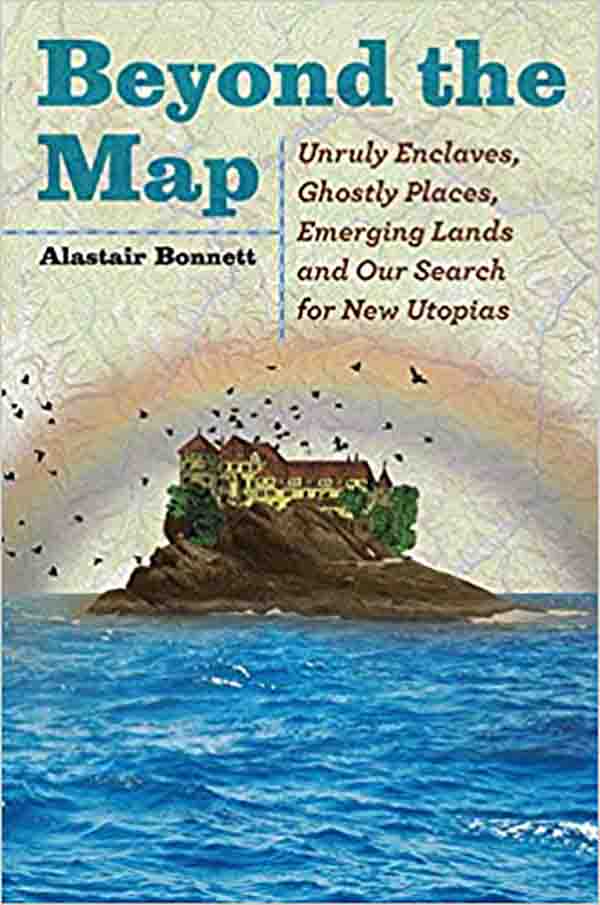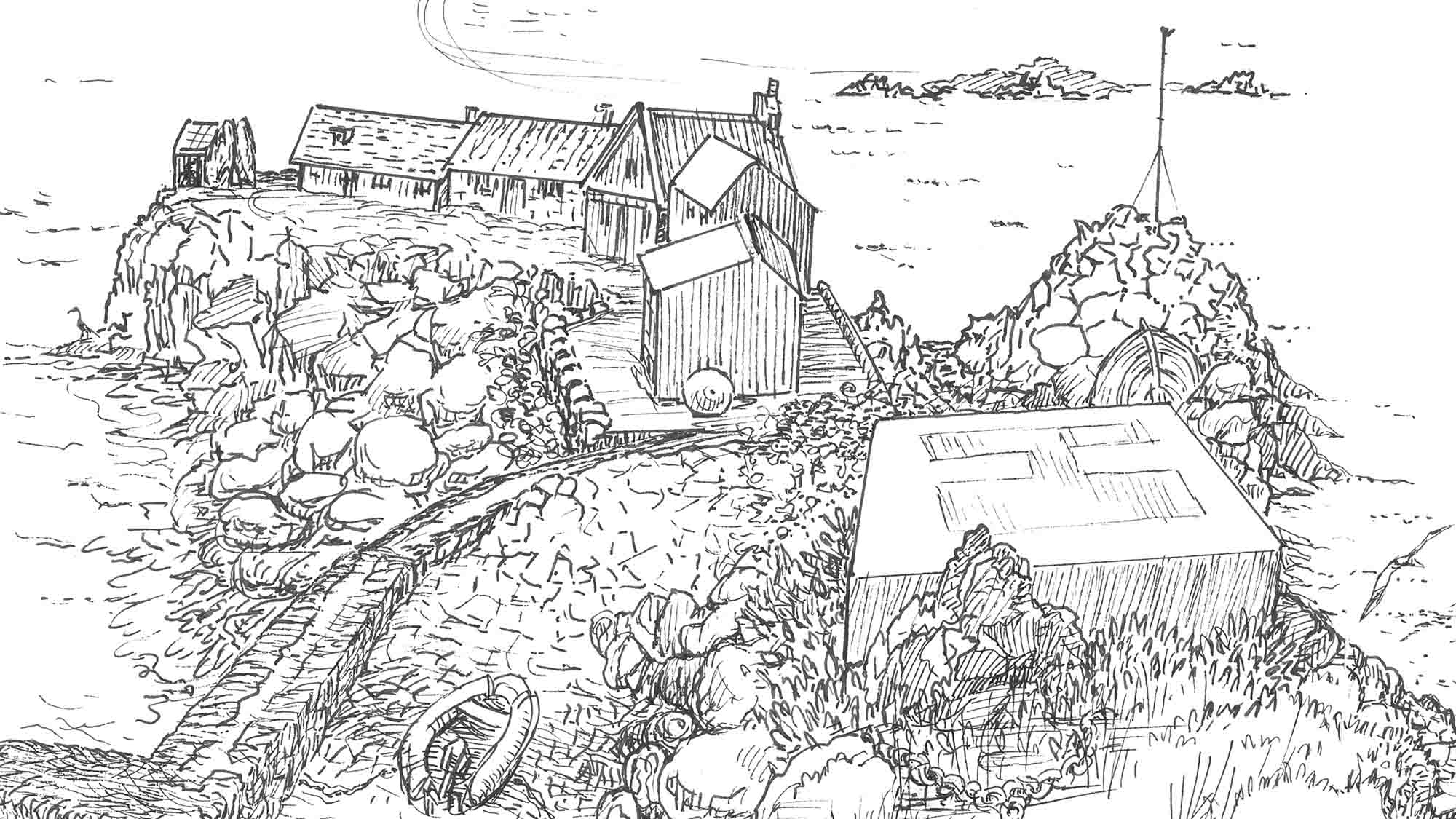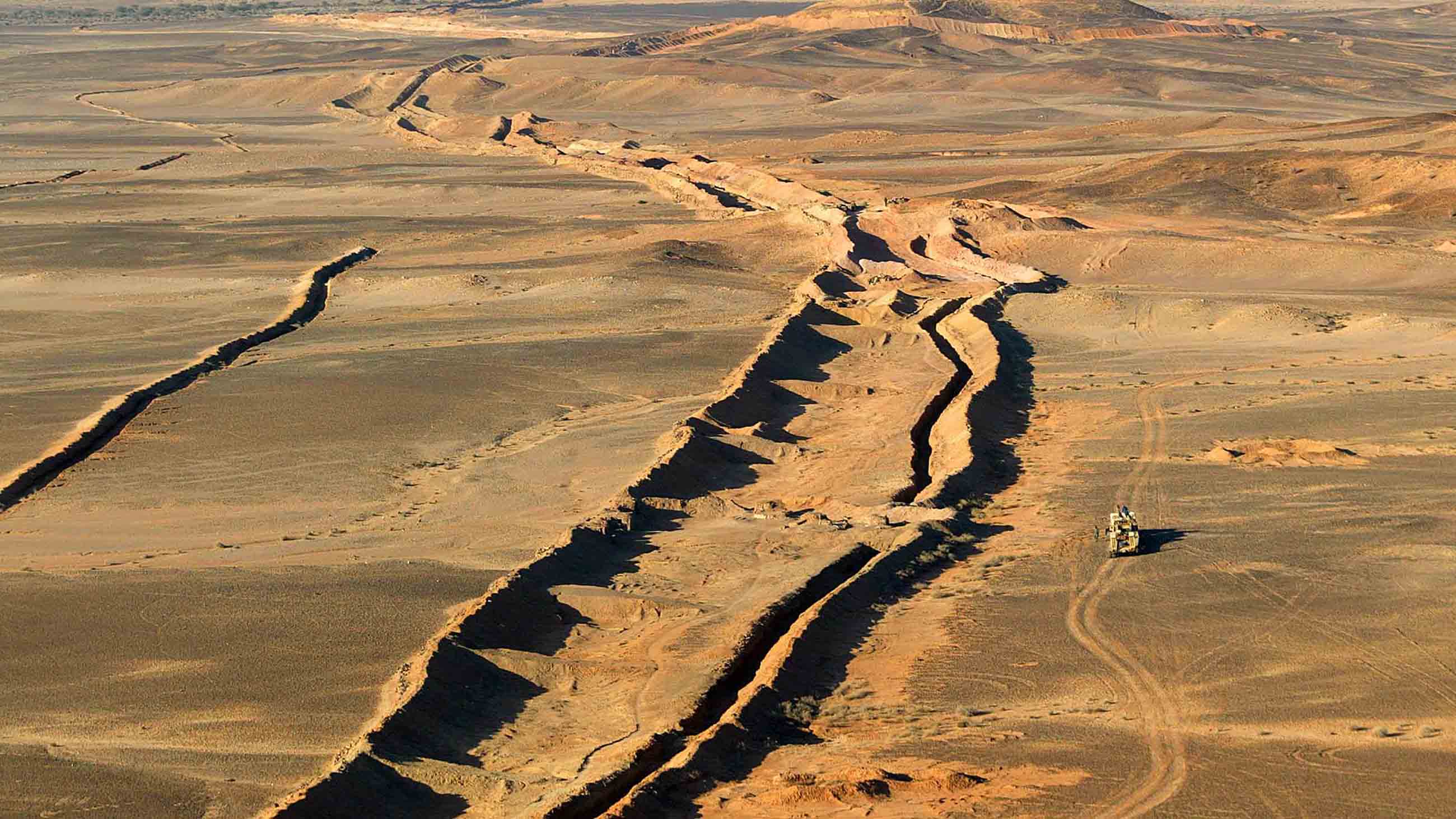Our lives are saturated with maps. We see them in cars, subways, and airplanes. We access them with our phones, computers, and GPS devices. There are maps of deep space and of the topography of the deepest ocean floors. Then there are the maps of us — of our genomes, of the cognitive landscape of our brains, of the web of neural connections that allow us to see and think and act. Our faith in the map as a true representation of reality, and a reliable metaphor for experience and the concepts of modern life, is exercised every day, largely without question.

BOOK REVIEW — “Beyond the Map: Unruly Enclaves, Ghostly Places, Emerging Lands, and Our Search for New Utopias,” by Alastair Bonnett (University of Chicago Press, 304 pages).
Into this cartographic zeitgeist comes a new book by the British geographer Alastair Bonnett that urges us to question whether maps are really up to the task of representing our world. Bonnett presents compelling evidence that this is a time of disruption in how we inhabit, conceptualize, and move across spaces, and that we can no longer rely on the map as a central metaphor and tool. Instead, he urges us — as the title states — to go beyond the map.
To that end, he shows us places around the world — from a garbage city in Cairo to an urban park in Helsinki, from the underground tunnels of Tokyo to a traffic median in Newcastle, England — where strange geographic splinterings and mutations are going on. His book is both salient and eye-opening, chock full of events, facts, and places readers may never have known about, let alone seen for themselves. Ultimately it challenges what we think we know about the world.
Bonnett, a professor of social geography at Newcastle University, organizes “Beyond the Map” into five parts: “Unruly Islands,” “Enclaves and Uncertain Nations,” Utopian Places,” “Ghostly Places,” and “Hidden Places,” with 39 chapters all told, many just a few pages long. While the sheer number may seem daunting, each contains fascinating elements. “The Saharan Sand Wall,” for example, focuses on the longest active military barrier in the world — a sand berm 1,367 miles long that is visible on Google Earth. Guarded by 90,000 Moroccan troops and bolstered with 7 million land mines, it has acted since the late 1980s as Morocco’s defense against the Sahrawi Arab Democratic Republic, an essentially exiled people of 600,000 who mostly inhabit refugee camps in Algeria and Mauritania.
In “‘Dau’ Movie Set,” Bonnett sets his sights on the nearly unbelievable story of a Russian filmmaker who in the mid-2000s recreated a model city of Soviet-era Moscow, complete with apartments, electricity, and plumbing. The director required his cast to live there 24 hours a day and never break character. Actors began spying on one another and some were arrested by a secret police force that put them in jail alongside criminals brought in as extras from nearby jails.
Fittingly, climate change plays a leading role in the book. In “Doggerland,” Bonnett visits the fastest-disappearing place in Britain — a village in Suffolk whose sandy cliffs are crumbling into the sea — and in “The New Arctic” he discusses the recent revelations of a mega-canyon in Greenland longer than the Grand Canyon. Through each of these chapters Bonnett reveals how “the old view of geography as a collation of known and clear borders and established, accepted facts is disintegrating.”

The most vivid places in the book are those Bonnett has seen for himself. In “Unruly Islands,” he takes readers to Les Minquiers, an area of sand and rock measuring 77 square miles that is reduced at high tide into a handful of tiny islands, most of them smaller than a few hundred square feet. It is an especially apt example of how nature creates conditions that defy the human instinct to delineate, mark, and transform places to suit our needs. As he sits on a sandbar, Bonnett notes how “with every passing minute it grows a new shoreline. The silky wet sand is rivuleted with braided streams that tumble out from the island’s humped golden spine.” He then realizes he must leave when the tide turns to “sail away to somewhere safe, somewhere certain.”
A highlight of “Beyond the Map” is a chapter skewering the values and assumptions that animate what’s known as the New Nomad movement — a band of young people unmoored from a desk or mortgage who travel the world working from their laptops, documenting their carefully curated lifestyles on Instagram and other social media. Free of place, the New Nomads espouse a progressive and multicultural worldview that masks a privileged ultra-individualism made possible by capitalism and the right passport. He points out that such types have nothing in common with actual nomads, who move between established places of which they have vast generational and direct knowledge. As he writes: “Maybe if the ‘New Nomads’ called themselves ‘small-business executives with tiny caravans’ it would be nearer the truth, though I can appreciate why they don’t.”
Though dotted with lovely hand-drawn illustrations by Rachel Holland, “Beyond the Map” would have benefited from some high-quality photography — or perhaps from being rethought as a photography book with accompanying essays — so we could see with our own eyes the uncanny marvels he describes again and again. But the book is important for its myriad examples of how to see and explore our surroundings with fresh eyes and leave ourselves open to new discoveries.
If you think this is just a quaint exercise, consider how strongly geography influences our deeper beliefs about the world, our notions of what is true and real, and how problematic these fixed ideas can become when they intersect with religion, politics, globalization, or contrary facts and perspectives. Bonnett turns his attention to these issues in chapters on Ukraine, Jerusalem, China’s Hainan Island — and the Islamic State, whose terror networks are “a sad reminder that religious extremists have an extreme relationship to place; that they like places to be cleansed and compliant.”
In urging us towards new intellectual vistas, Bonnett gives us a glimpse of what it might be like to question the fundamental boundaries and delineations of our ideas about space, politics, conflict, community, connection, and neighbors. The book opens up new spaces in our minds in which alternative futures could take root.
M.R. O’Connor, a 2016-17 Knight Science Journalism fellow at MIT, writes about the politics and ethics of science, technology, and conservation. Her first book, “Resurrection Science: Conservation, De-Extinction and the Precarious Future of Wild Things,” was named one of Library Journal’s and Amazon’s Best Books of 2015. Her book “Wayfinding: The Science and Mystery of How Humans Navigate the Earth” is forthcoming from St. Martin’s Press.











Comments are automatically closed one year after article publication. Archived comments are below.
Interesting article and explorations of perspective; I might just have to read it. But as far as being able to see things on Google Earth as a reference to their size . . . I can see my Honda Civic on Google Earth if I zoom in!